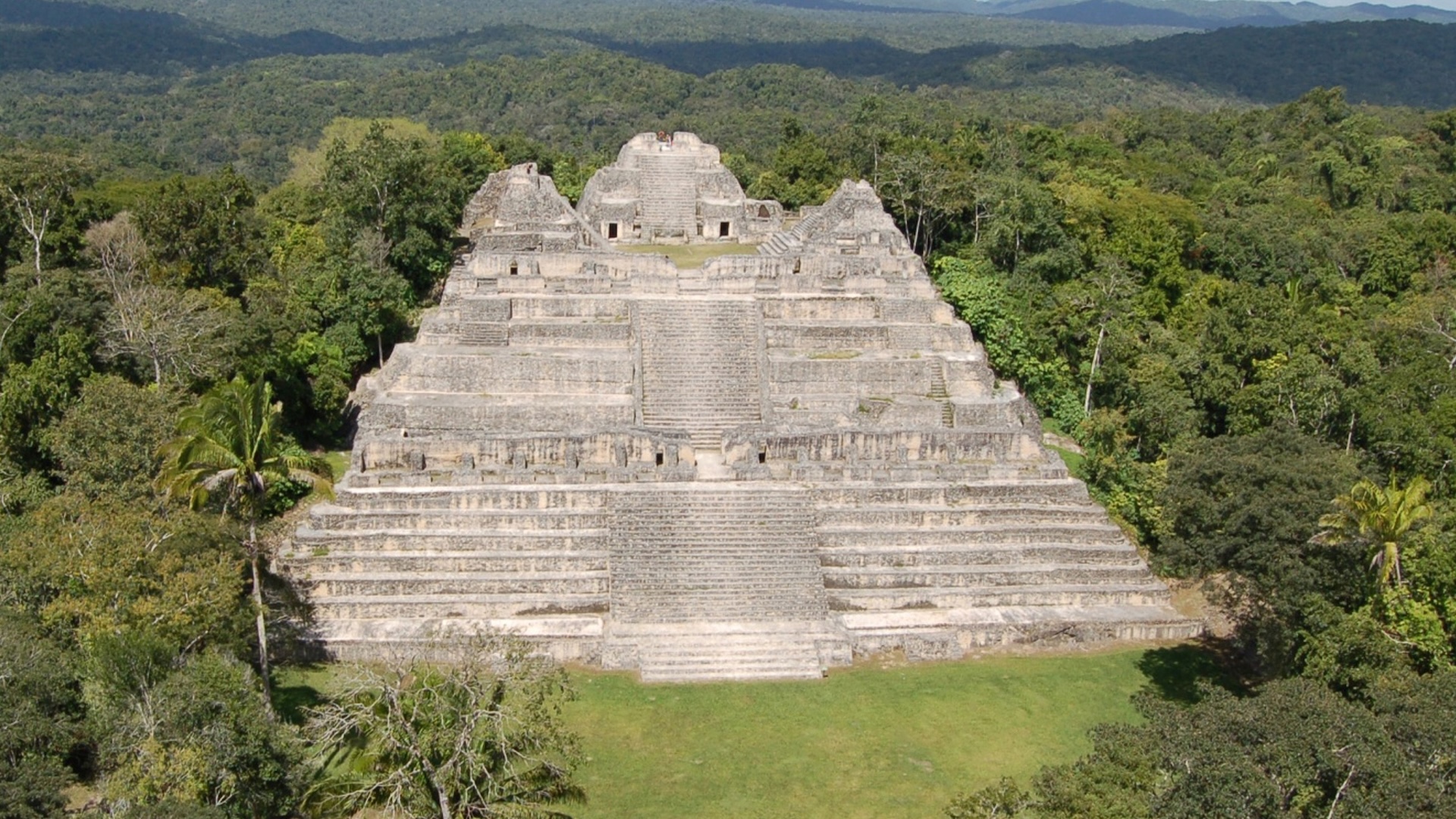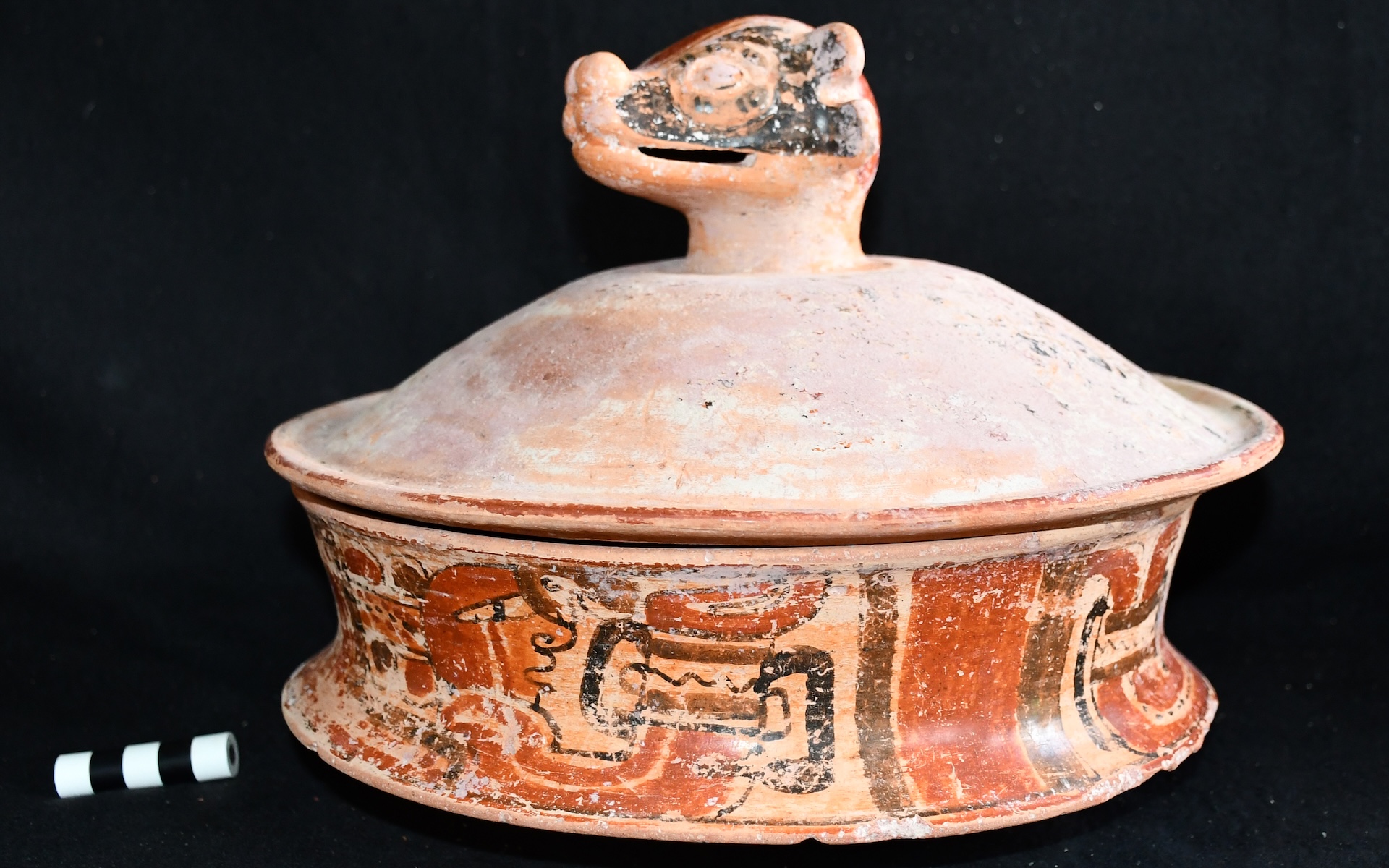Archaeologists in Belize have unearthed the tomb of the first ruler of the ancient Maya city of Caracol, which was a major center in the Maya Lowlands during the sixth and seventh centuries.
The tomb of Caracol’s king, named Te K’ab Chaak (Mayan for “Tree Branch Rain God”) dates to about A.D. 350; he had ascended the throne at Caracol in 331.
This is the first time any identifiable royal tomb has been found at Caracol since University of Houston archaeologists Diane Chase and Arlen Chase began excavations there more than 40 years ago, according to a statement released Thursday (July 10).
Te K’ab Chaak’s tomb was one of three major tombs found in the “Northeast Acropolis” at the site — a raised complex just outside the city center that was used for royal homes and public ceremonies.
The royal tomb contained pottery vessels, carved bones, seashells, tubular jade beads, and a mosaic death mask made of jade. One pottery vessel portrayed a Maya ruler holding a spear while receiving offerings, while another showed Ek Chuah, the Maya god of traders, surrounded by offerings, the statement said.
An earlier discovery in 2010 had found artifacts from central Mexico, including obsidian blades, which indicated the influence of the central Mexican city of Teotihuacán, which also influenced the later Aztecs.
Related: ‘Stunning’ discovery reveals how the Maya rose up 4,000 years ago
But the newfound tombs at Caracol date to at least a generation before that, which implies they held native Maya rulers rather than a ruling elite from Teotihuacán, the statement said.
Maya city
The remains of Te K’ab Chaak indicate that he was about 5 feet, 7 inches (1.7 meters) tall and had no teeth when he died at an advanced age, the statement said. The royal dynasty he founded lasted more than 460 years.
Caracol was one of the largest and most important cities in the Maya world, with a population estimated at more than 100,000 people at its peak. But it declined for unknown reasons, along with many other Maya settlements, by A.D. 900.
Its ruins are now found in highland jungle in the Cayo District of central Belize, about 53 miles (85 kilometers) from the Caribbean coast and 45 miles (72 km) southeast of the Maya city of Tikal in Guatemala.
Archaeological investigations have revealed that Caracol once covered more than 68 square miles (177 square km) with extensive causeways, agricultural terraces, buildings and monumental structures, like the 140-foot-high (43 meters) Caana pyramid, which was also discovered by the Chases and remains one of the tallest buildings in Belize to this day.
Arlen Chase, a professor of anthropology at the University of Houston, said the Teotihuacán influences at the site indicated that Caracol’s early rulers had deep contacts with that region and other parts of Mesoamerica at that time.
“Both central Mexico and the Maya area were clearly aware of each other’s ritual practices,” even though Teotihuacán is around 745 miles (1,200 km) from Caracol, he said in the statement.
The connections between the two regions seem to have been maintained by the rulers themselves, so Te K’ab Chaak and other Maya kings may have “engaged in formal diplomatic relationships with Teotihuacán,” Chase said.
Ancient Maya quiz: What do you know about the civilization that built pyramids across Mesoamerica?

